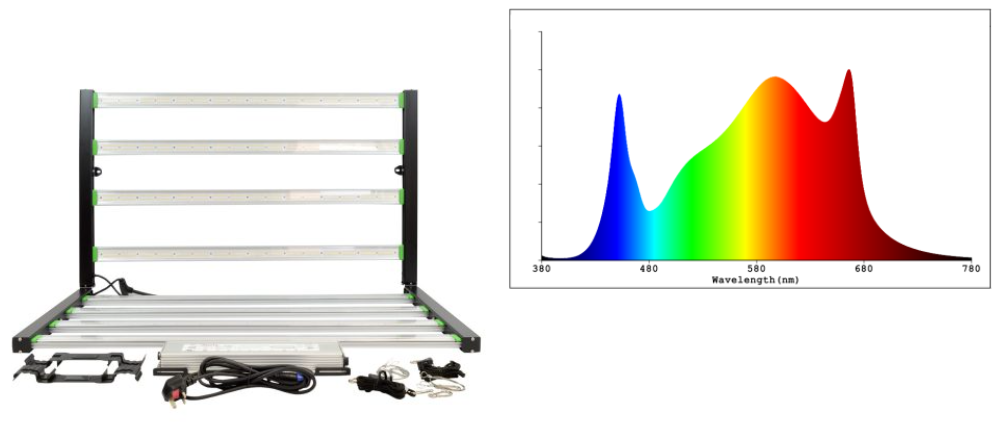
James Prietzel, Product Manager at Intelligent LED Solutions (ILS)
James is the ILS Product Manager for everything related to LEDs and has been with ILS since 2012. He is dedicated to understanding the latest technologies and innovations from leading suppliers in the OptoElectronics world, from optics, to LEDs and to Intelligent LED Drivers.
Horticultural lighting has increased possibilities of how and where we can grow plants and crops. With ever-evolving LED (light emitting diodes) technologies and new innovations, horticultural LED solutions are becoming more affordable and more widely used. Engineering and developing effective spectrums of light enable better plant quality, quicker growth rates and more harvests.
Traditionally horticulture has focused on red and blue wavelengths, as plants absorb wavelengths the most. However, there are benefits to be gained for including other previously dismissed wavelengths. The spectrum of light that plants actively use is known as Photosynthetically Active Radiation (PAR). It encompasses all wavelengths from 400-700nm and includes the key wavelengths required for photosynthesis.
What is full spectrum light?
Light is made up of photons, which are particles of light. The colour of the light is determined by the emitted photons wavelengths. The combination of the number of photons emitted and their varying wavelengths is what we refer to as a light spectrum.
Full spectrum light is quite literally light encompassing the full spectrum of wavelengths. It is what we receive from the output of natural sunlight.
- Ultraviolet (10-400nm)
Ultraviolet can help plants produce essential oils which enhance flavours and scents. It also helps plants protect themselves from excessive ultraviolet exposure; acting as their own natural sunblock, ensuring the internal plant processes are protected.
- Blue (425-525nm)
Blue light directly influences chlorophyll B production. The carotenoids in plants absorb blue light and control leaf fall. Blue light works to increase opening of stomata in leaves, that control uptake of carbon dioxide and water loss. For fully operational photosynthesis, blue light is a key wavelength required.
- Green (520-550nm)
As plant cells do not easily absorb these wavelengths, green photons can penetrate further into plant canopies before being absorbed. This enables light to reach plant cells that are blocked from receiving red and blue light by leaves higher in the canopy. This allows lower leaves and plant cells to still contribute to photosynthesis and improve plant yields and potentially creating healthier plant structures.
- Red (600-700nm)
Chlorophyll A absorbs hyper-red wavelengths (660nm). While chlorophyll B absorbs wavelengths closer to 640nm. Energy absorbed by chlorophyll is converted into energy-storing molecules. Through photosynthesis, stored energy is used to transform CO2 and water into glucose, which is then used to produce cellulose and starch.
- Far red and infrared (700-940nm)
Far-red light has a superior ability to pass though leaves than other red wavelengths do. When a high content of far-red light is absorbed by leaves, it signals to the plant that there is shade and sunlight is being blocked. This triggers the plant to grow taller and move to obtain better access to sunlight.
Why use full spectrum?
Different plant responses can be triggered by different light wavelengths. Certain wavelengths can be used in solitary to improve and encourage certain aspects in plants, such as using red light to increase plant size. However, if a single wavelength is used in excess these responses can become counterproductive. Excessive amounts of red light can result in tall “stretched” plants with thin leaves.
Using full spectrum can be preferrable to avoid these occurrences. Having a full spectrum of wavelengths can be important, as the PAR range includes wavelengths from 400 to 700nm – not just the commonly used red or blue.
Outdoor plants receive the full range of wavelengths from the sun. Full spectrum LED solutions most closely replicate this natural light, by combining all wavelength colours for all plant stages of growth. Hence why they are such a popular solution for indoor growers and vertical farming. In a world where green space is running low, full spectrum LEDs make space-saving growing applications possible. Plus, full spectrum LEDs appear white to the human eye, making them much nicer for workers within indoor farms.
Why use full spectrum LEDs, not high pressure sodium (HPS) lamps?
In previous years, HPS lamps were the most popular solution. However, with technological developments and improved understandings of LEDs in horticulture, LED grow lights are superseding HPS lamps. LEDs run more efficiently, cost-effectively and have much longer life spans.
The heavy focus on red and blue in the early days of horticultural LEDs may have contributed to why earlier generations of LED grow lights struggled to match the production of traditional HPS lamps. Whereas in today’s market, new grow lights utilising full spectrum LEDs, are more than capable of matching and exceeding crop yields cultivated using HPS grow lights.
What are the products?
- Treviso – a linear full spectrum solution, perfect for indoor growing. Lightweight and easy to install, Treviso is ideal for vertical farms and rack systems to increase and improve plant growth. Learn more.

- Roma – a larger industrial full spectrum solution. Ideal for easy installation in greenhouse and larger vertical farms. Designed to complement a growing environment where there is no available daylight. Learn more.











